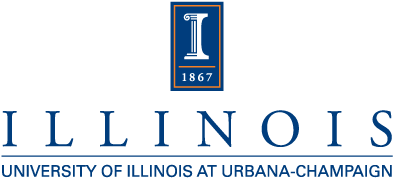
Editor's Note
The current issue of the newsletter contains the following:
- A current comment on reducing feed costs with the use of distillers dried grains with solubles (DDGS).
- A research report on the effect of the form of dietary fat and the concentration of dietary fiber on digestibility of fat by growing pigs.
- A press release on reducing feed costs by reducing particle size of corn.
- Two new publications from the Stein Monogastric Nutrition Laboratory.
- A correction to the November/December 2010 newsletter.
I hope you will find this information useful. To subscribe to the newsletter, please visit http://nutrition.ansci.illinois.edu/newsletter.
Sincerely,
Hans H Stein
Current Comment
Reduced feed costs with use of DDGS
Although the cost of DDGS has increased during the last 6 months, there are still significant savings associated with the use of DDGS in swine diets. DDGS will replace corn, soybean meal, and inorganic phosphorus sources in diets fed to pigs. Because the costs of these ingredients have increased more than the cost of DDGS, it is a good idea to include DDGS in the diets to help reduce feed costs. With current prices for corn, soybean meal, and DDGS, costs of swine diets are reduced by 7 to 9 dollars per ton for each 10% DDGS that are included in the diets. In most cases, 30% DDGS can be included in diets fed to all categories of pigs if an average or above average quality of DDGS is used and if diets are properly balanced for all nutrients. If 30% DDGS is included in diets fed to sows, weanling pigs, and growing-finishing pigs, the total cost savings by using DDGS is approximately 10 dollars per market pig produced.
Research Report
To determine true digestibility of nutrients, endogenous losses from the digestive tract must be measured. Because consistent values for endogenous losses of fat (ELF) in pigs have yet to be determined, the calculation of fat digestibility has mostly been limited to apparent digestibility.
Endogenous losses of fat may be influenced by the form of fat – extracted or intact – and by the concentration of fiber in the diet. The objective of this experiment was to determine the effect of the form of dietary fat on ileal and total tract digestibility of fat in growing pigs. To do so, it was necessary to measure endogenous losses of fat and to correct for the difference in amounts of dietary fiber in diets containing extracted fat and diets containing intact fat.
Press release
January 14: Particle size reductions may help lower feed costs
URBANA – It is well known that corn needs to be ground to be effectively utilized by pigs. New research shows that particle size reductions beyond current common practice may help lower feed costs.
“For many years producers have been grinding to an average particle size between 650 and 700 microns,” said Hans H. Stein, University of Illinois Extension swine specialist and professor in the Department of Animal Sciences. “This particle size was based on research showing that if grain is ground to a smaller particle size, then problems with ulcers in pigs may increase.”
However, Stein said research also shows that energy and nutrient digestibility will increase if particle size is reduced to smaller than 650 microns. Because of this increase in nutrient and energy digestibility, less feed is needed to produce one pound of gain if grain particle size is reduced.
Publications
Kil, D. Y., F. Ji, L. L. Stewart, R. B. Hinson, A. D. Beaulieu, G. L. Allee, J. F. Patience, J. E. Pettigrew, and H. H. Stein. 2011. Net energy of soybean oil and choice white grease in diets fed to growing and finishing pigs. J. Anim. Sci. 89:448-459.
Petersen, G. I., C. Pedersen, M. D. Lindemann and H. H. Stein. 2011. Relative bioavailability of phosphorus in inorganic phosphorus sources fed to growing pigs. J. Anim. Sci. 89:460-466.
Correction
The November/December 2010 newsletter contained erroneous links in the "Publications" section. The following are the publications from that newsletter, with corrected links. We apologize for the inconvenience.
Kil, D. Y., and H. H. Stein. 2010. Invited Review. Management and feeding strategies to ameliorate the impact of removing antibiotic growth promoters from diets fed to weanling pigs. Can. J. Anim. Sci. 90:447-460.
Baker, K. M., B. G. Kim., and H. H. Stein. 2010. Amino acid digestibility in conventional, high protein, or low oligosaccharide varieties of full-fat soybeans and in soybean meal by weanling pigs. Anim. Feed Sci. Technol. 162:66-73.
Stein, H. H. 2010. Nutrient and energy utilization by swine. Pages 31-42 in Proc. 26th annual North Carolina Swine Nutrition conference, Nov. 10, 2010. Raleigh, NC.
Rojas, O. J. and H. H. Stein. Fermented soybean meal substitutes for fish meal. National Hog Farmer, December issue.
Goebel, K. P. and H. H. Stein. 2011. Ileal digestibility of amino acids in conventional and low-Kunitz soybean products fed to weanling pigs. Asian-Austr. J. Anim. Sci. 24:88-95.